The Division end-game guide
What The Division’s end-game entails and the critical path you’ll take to get geared up.
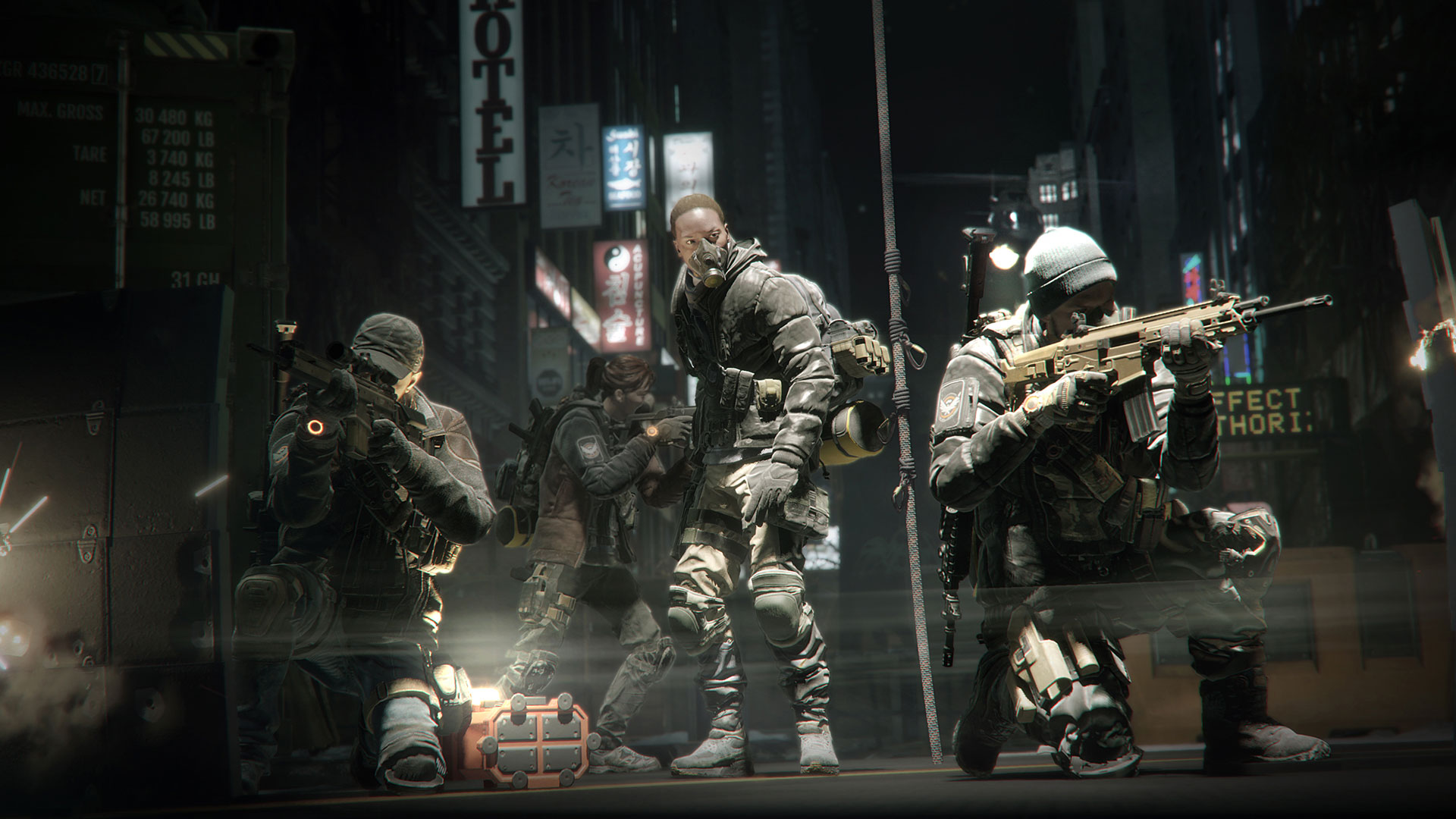
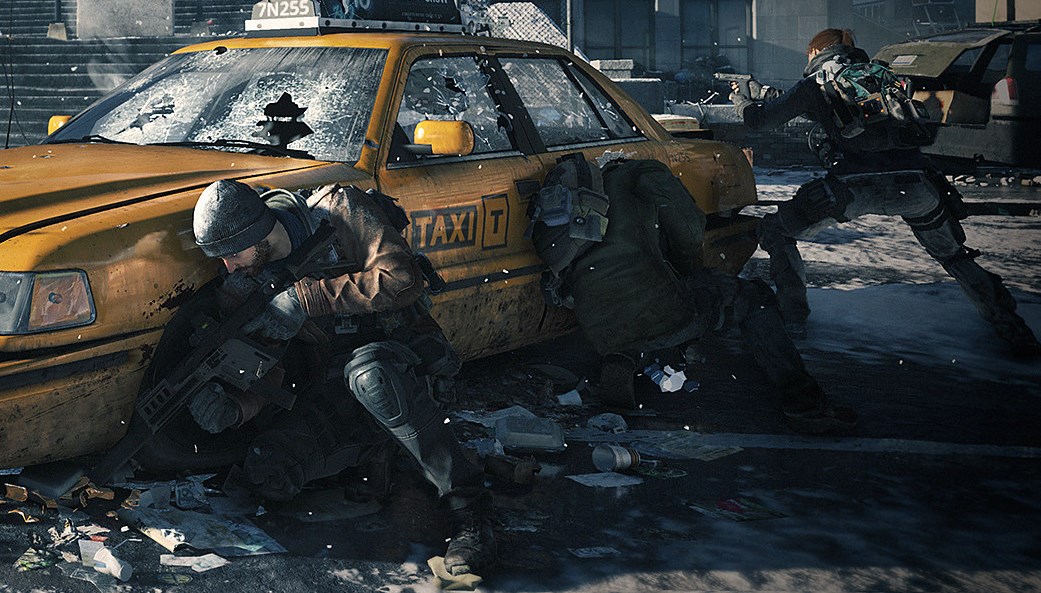
You’ve cleansed the Cleaners, gotten rid of the Rikers, and collected a steamer trunk’s worth of beanies on your journey to level 30 in The Division. Up next: getting numbers to go up higher. Through daily missions, crafting, and plenty of Dark Zone visits, the end-game for your Agent revolves around strapping on better and harder-hitting gear. You’ll optimize and balance your health, damage, and ability potency stats. You’ll furnish your character with the best high-end arsenal which can tip DPS numbers well into the hundreds of thousands. Most importantly, it’s the best way to prepare for max-level DLC such as the raid-like incursions and new zones.
Here’s an overlook at what The Division’s end-game entails and the most critical path you’ll need to take to get geared up.
Guide updated May 4th.
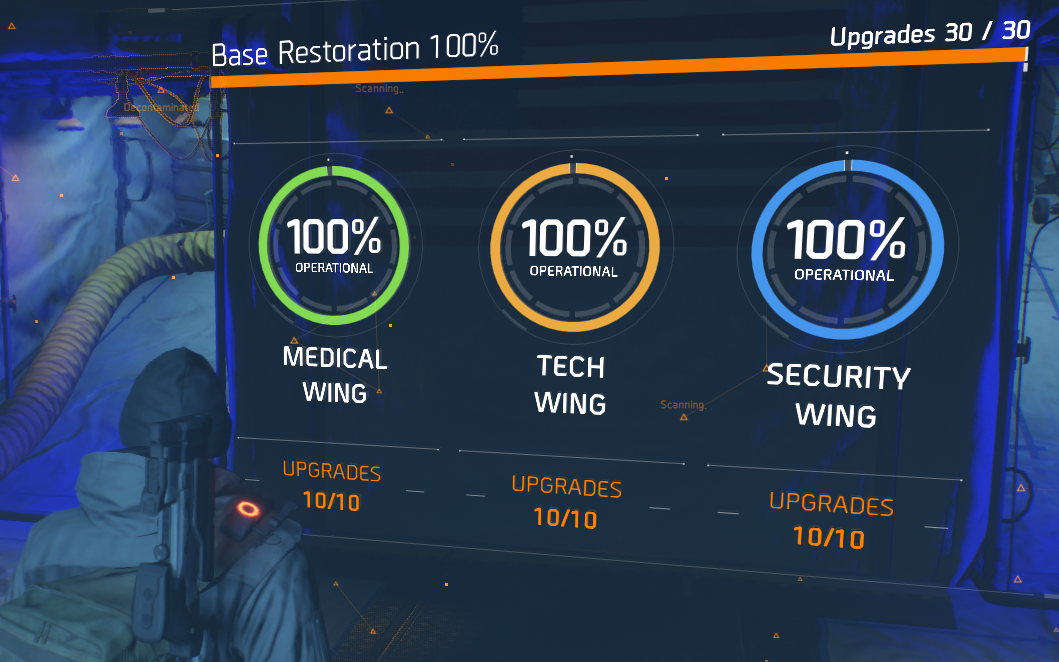
Base of Operations
The crucial first step in facing the gear mill is a fully upgraded and staffed Base of Operations. You’ll acquire the necessary resources for the Medical, Security, and Tech wings of your hub by completing main story missions and the myriad Encounter missions dotted throughout Manhattan. Focus on the main missions first—they’re both an excellent source of valuable credits and award the biggest chunk of resources on completion. The Encounters, though repetitive in content, are faster to finish in balance to their tedium and help prop up your funds and equipment while leveling.
When level 30 heaves into sight, your headquarters should be at 100 percent completion. That includes the crafting bench, recalibration station, and two vendors (one Security, one Tech) who’ll begin stocking yellow-colored (or high-end, the topmost gear quality tier) weapons, armor, and blueprints after you cap. You’ll need all of these for your end-game pursuits.
Purple power
Once the homestead is taken care of, it’s time to acquire a set of superior gear, the purple-colored tier just behind high-end. They’re easier to get than the latter, drop fairly frequently in the final few zones, and offer an opportunity to brush up on min-maxing stats without spending precious Phoenix Credits on recalibration.
Replaying missions on hard difficulty is best, as mini-bosses and the main climactic boss battle guarantee a plurality of purples. Enemies will scale to level 30 and bulk up to strong and elite status, so pack plenty of specialty ammo and damage mitigation abilities to help chew through armor and health bars.
The biggest gaming news, reviews and hardware deals
Keep up to date with the most important stories and the best deals, as picked by the PC Gamer team.
It’s your choice on which mission deserves the farm—the payoff will depend on how well you fight either solo or in a group. The final mission of the game, “General Assembly,” is considered by the community as the best ratio of purples given against time invested (around 15-20 minutes at a good clip). The crowning battle against Colonel Bliss’ transport chopper guarantees at least four pieces of superior equipment, and the tight corridors and cover-lush interiors of the UN building leading up to the fight eases the challenge of dealing with toughened foes. Two mini-boss encounters before Bliss drop at least two purples apiece, as well.
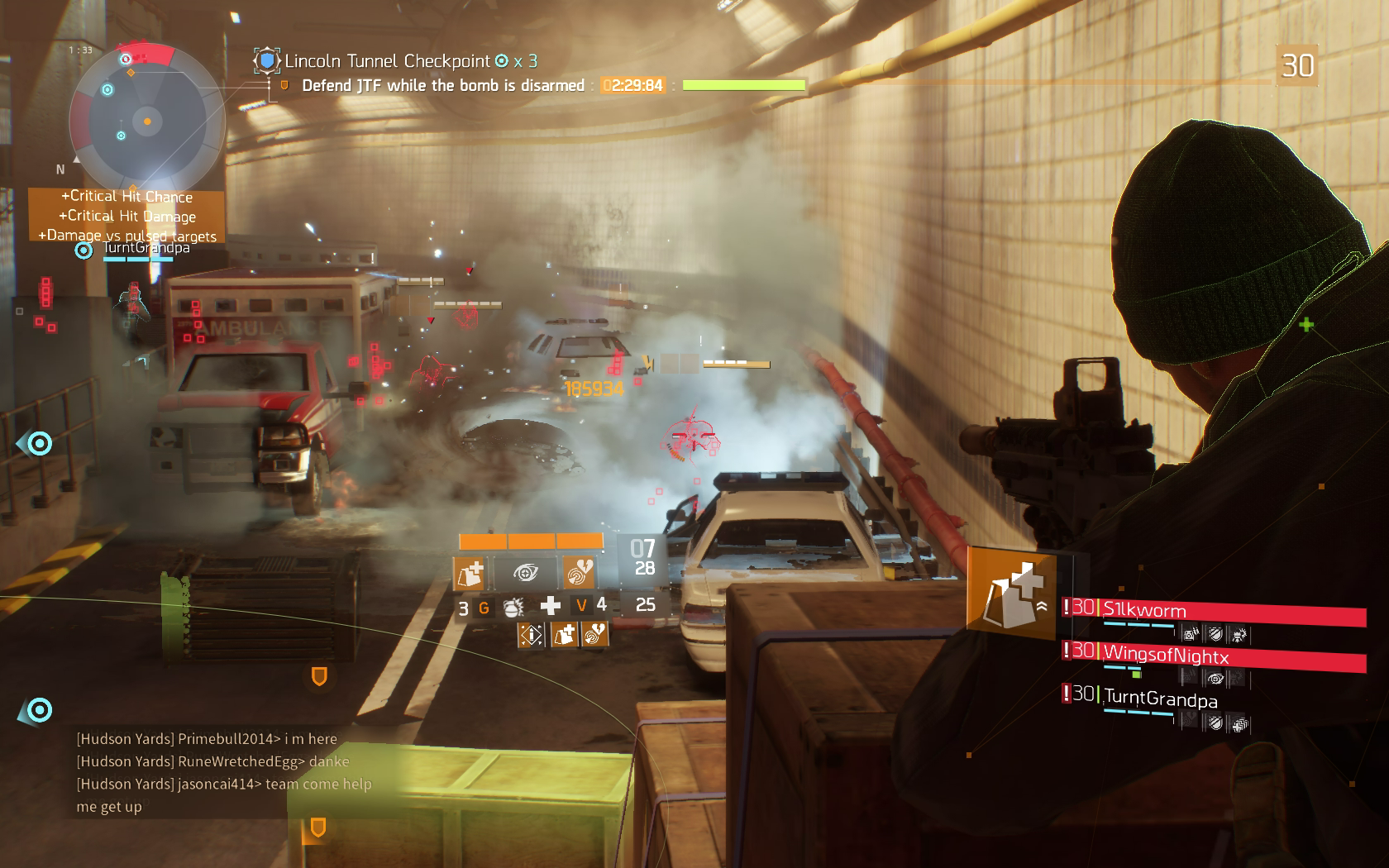
Daily Challenges and Phoenix Credits
Revisiting conquered content also gives out bonus item rewards assigned to three selected missions on a daily rotation. The requirements aren’t anything new—complete the indicated mission (seen as a blinking icon on the map with “daily bonus available” in its description) and get an extra wad of credits and an additional superior-tier item.
Two of the missions need to be set to hard mode to count; they’re definitely solo-able with cautious play and decently powerful gear, but matchmaking into a group is always a quick and easy alternative. The third mission must be completed in challenging mode, a new difficulty unlocked at level 30. A group is absolutely a must—you’ll need to communicate and coordinate firepower against insanely powerful foes who can easily send you to the floor in a single hit if your health pool isn’t deep enough.
The best upside for all your pain are Phoenix Credits, the end-game currency used to purchase high-end blueprints and tinker with their associated stats. Both hard mode missions give 15 credits each; challenging mode rewards 30. Outside of the Dark Zone, this is the fastest way to gather a fair sum of PC to put towards a swanky gear set. If you’re confident in your gear and group, you can repeat challenging missions as many times as you like for more PC. Just don’t forget about those hard mode dailies!
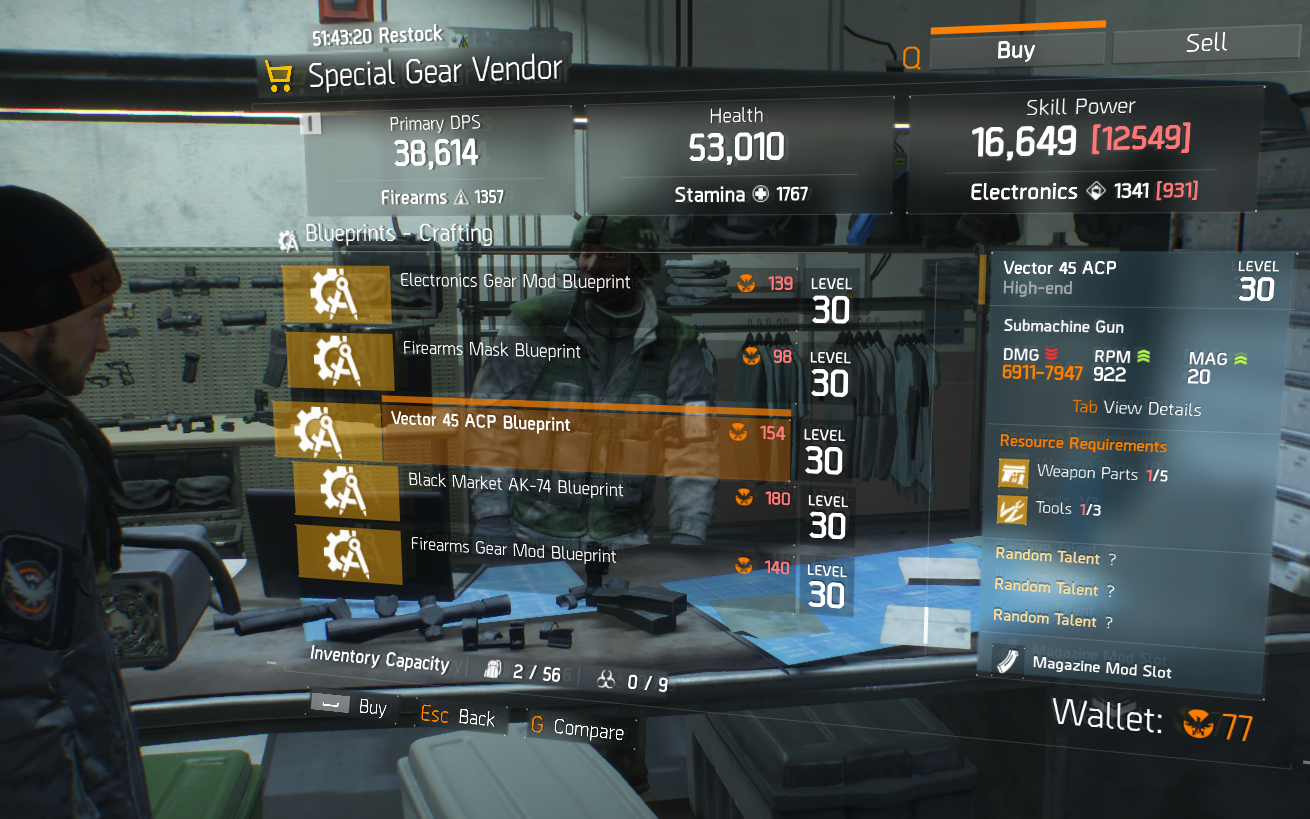
High-end blueprints
Pay a visit to the Tech wing vendor, and he’ll tantalize you with a ream of high-end blueprints covering weapons, armor, and attachments. This is where you’ll want to spend your hard-earned PC, and it’s recommended to go for the blueprints first above new outerwear or armaments. A good starting point is the Vector 45 ACP blueprint which, when crafted, spits out a hard-hitting SMG that’ll go a long way to improving proficiency in challenge mode.
Speaking of crafting, you’ll hit the bench as often as you hit the Manhattan streets once you’ve collected a sizable library of blueprints. Not only are crafted weapons typically far better than what’s found in vendor selections, each craft is a roll of the dice to determine the two to three passive talents appended to each gun or armor piece. These talents tip major power into your output—the Brutal talent, for example, increases headshot damage by a percentage. Pick which talents suit your character best from the complete list, and you can craft loot personalized for your playstyle. All of this obviously hinges on carrying enough weapon parts, electronics, and other crafting material to put into your rolls; if you’ve been keeping an eye on your funds, you should already have a nice starting pile.

Dark Zone chests
As Chris wrote, the Dark Zone is filled with chests and enemies carrying a greater quantity of high-quality loot. Bolstered by farmed purples and a yellow or two, you can hit the DZ with enough firepower and brawn to tackle the named NPCs that wander each Zone territory—roaming boss battles, in other words. They’re a great wellspring of superior and occasional high-end drops, and wiping them from existence racks up your DZ level as an added plus.
Avoid the temptation to go rogue—the penalty for having a bounty stick on you isn’t worth the lost loot and DZ level—and stick to gathering keys (dropped from NPC enemies), opening chests, and extracting whatever you pick up. If you can get to DZ rank 50, you’ll unlock a whole new set of high-end blueprints at DZ safehouse vendors. With enough familiarization of the DZ’s risk-reward see-saw, you can complete a route cycle and head back to base with a stash-load of items to crunch into the crafting bench for better gear.
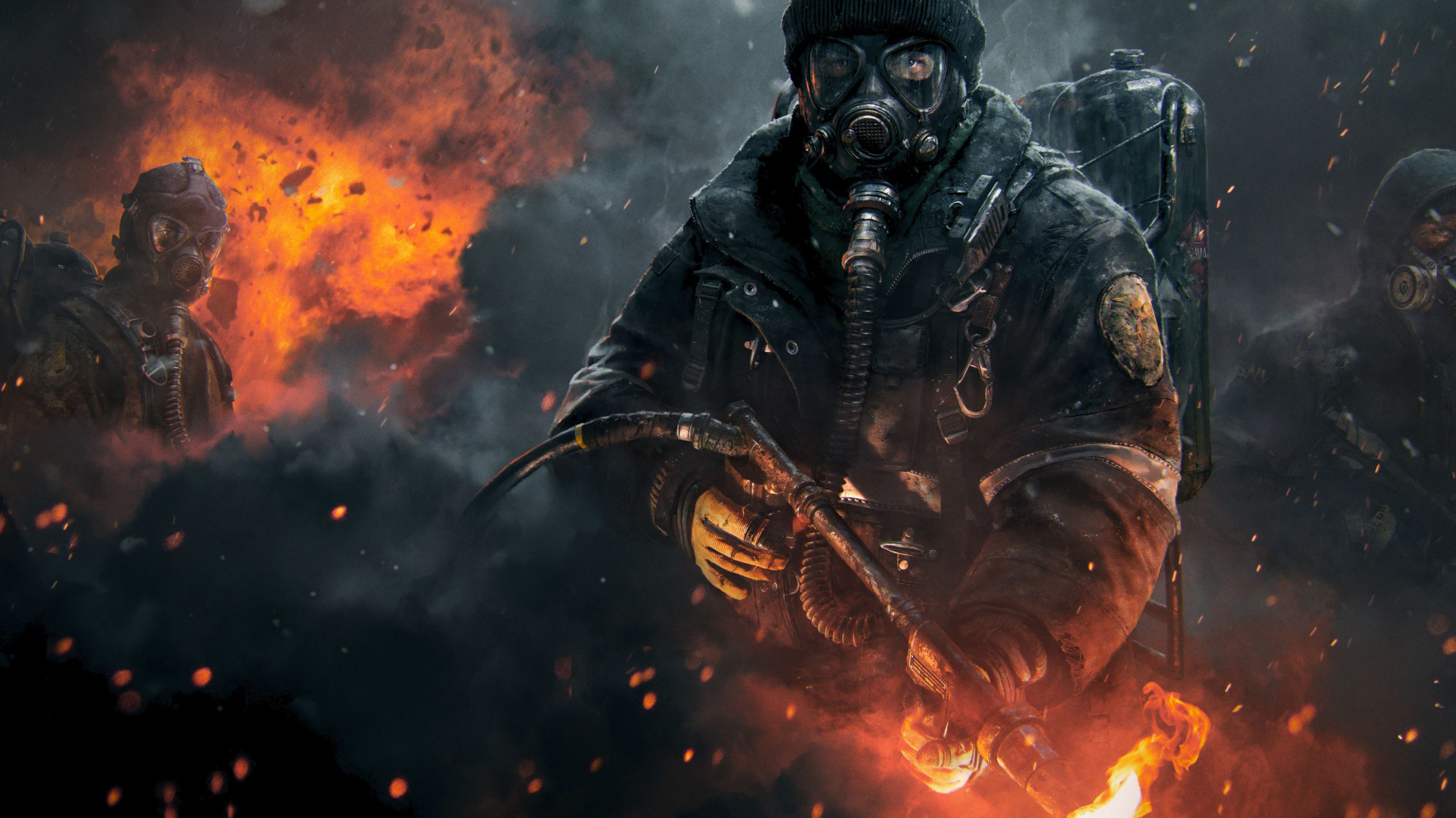
Incursion: Falcon Lost
Once you’ve gathered a respectable arsenal and honed your skills in the Dark Zone, it’s time to tackle Falcon Lost, the first of The Division’s Incursions: a raid-like encounter tuned for 4-player groups. A water treatment plant taken over by the Last Man Battalion sets the stage for a clash with a two-pronged objective: eliminate an LMB APC while fending off 15 waves of increasingly tough LMB soldiers within the industrial jungle of the plant’s main floor.
Falcon Lost’s high difficulty makes it the pinnacle of challenge for The Division’s current content. You’ll need to be level 30, wear a combined gear score of 140, and have completed the General Assembly story mission to satisfy eligibility to give it a go. Don’t expect a relaxed pace nor the exploitable disorganization of Cleaners or gangbangers found in earlier missions; the Strong- and Elite-tier LMB shotgunners and grenadiers will pressure your position and boast plenty of health and armor to soak up precious ammo reserves. Later waves get more punishing with drones that’ll zap and stun accompanying gadget-wielding rogue Division agents who can easily chunk down your health with a few snipes.
As expected, teamwork is king for success. Falcon Lost exacts a heavier demand for coordination best seen in its light mechanics for dropping bomb carriers and working further into the plant to temporarily disable turrets guarding the APC during windows of vulnerability. Your group’s composition in terms of gear, ability, and talent choice factors into victory or failure, so hopping on the mic or keyboard to assign roles and establish a plan is a vital step. You’ll want a decent spread of damage and heal abilities across your group; a popular setup involves two teammates stacking Electronics equipment for powerful heals and buffs while the remaining two focuses on glass-cannon Firepower for wave management and mop-up. A full set of High-end gear is ideal; you can squeak into a win with a few Superior-tier pieces at a heavy toll on survivability and damage output. If you’re struggling, consider hitting the Dark Zone or crafting bench for better gear.
After the APC falls, you’ll be rewarded with 33,000 credits, 15 Phoenix credits, a cosmetic item, a High-end item, and a piece from a random gear set. The payout and experience of a more intricately designed encounter is worth wading through daunting Incursion combat, and the community has put together blueprint lists and some helpful guides detailing specific strategies for conquering Falcon Lost, so you should be fully prepared before stepping into the arena.
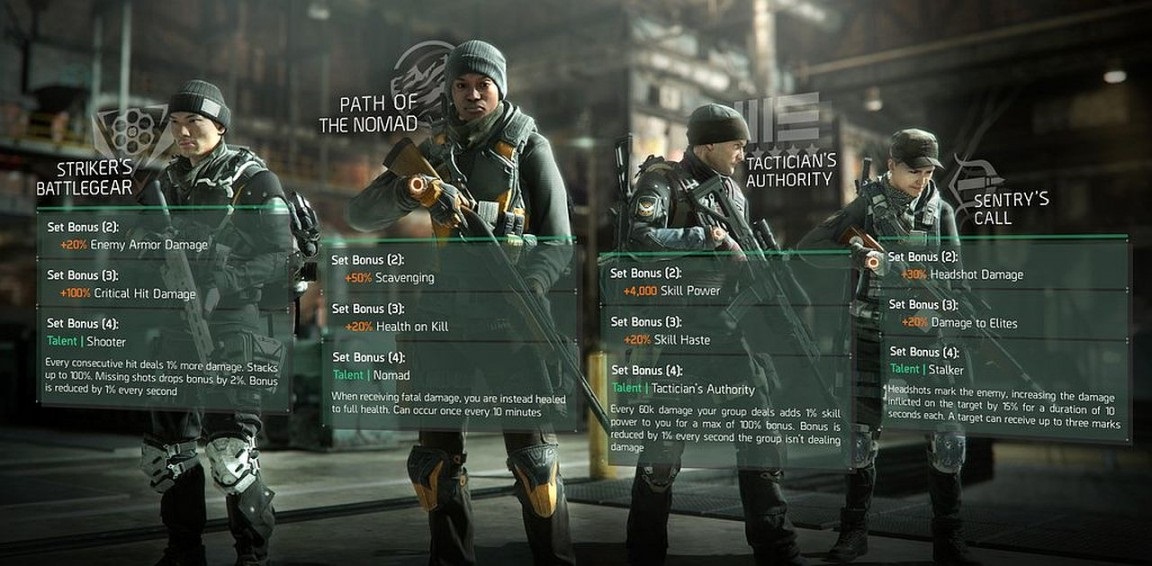
Gear, set, match
The Garfield orange of High-end gear has dominated the inventory screen of many agents in the two months since launch, but the minty green of Falcon Lost’s new gear sets is the latest fashion craze sweeping Manhattan. The update brought four major sets for collection, and these follow traditional RPG characteristics of bestowing extra bonuses after gathering a certain amount of pieces. Each set themes its bonus around a specific playstyle. The Tactician’s Authority outfit specializes in ability-boosting Electronics and adds a stacking stat bonus as you or your group deal damage. The Sentry’s Call set—the current favorite for damage-oriented characters—emphasizes sniping and accuracy with its headshot multipliers. The Striker’s Battlegear steadily increases bullet damage as you land hits. The Path of the Nomad set is all about HP and survivability: taking a fatal shot will instead restore you to full health every 10 minutes.
The most straightforward method for getting your gloves on the new duds is an Incursion run or two. You’re guaranteed a single set piece drop per run; with a good group, enough time, and the favor of the loot gods, you can feasibly gather an entire set in a day or two of successful raiding. Alternatively, set blueprints are purchasable from everyone’s favorite Special Gear Vendor in the Base of Operations. You’ll need to cough up a steep price of around 330 to 390 Phoenix credits per blueprint, and each craft consumes a hefty pile of High-end materials. If you choose that route, steel yourself for a sluggish affair of tossing piles of equipment and guns into the grinder until you have enough fabric and electronics for crafting. A handy resource is the Daily Reset Info in The Division’s Reddit page, a player-run knowledge depository of all the daily weapons and items on offer at each vendor you can buy for scrap.
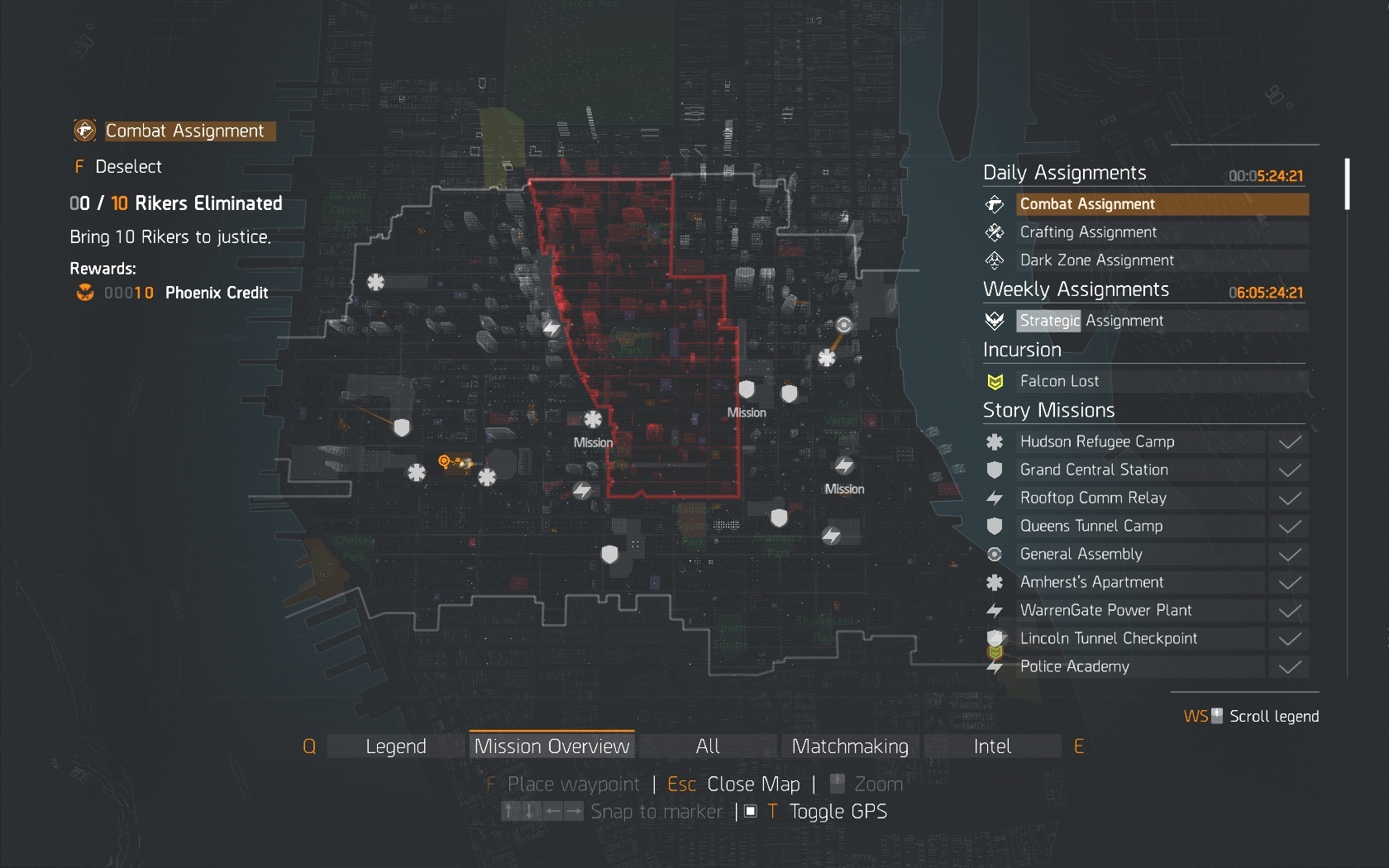
Mission: assignment
If daily missions haven’t satisfied your agent’s well-worn grindstone, then the new slate of daily and weekly assignments are a logical upgrade. Set on a 24-hour and 7-day rotation, each assignment tasks a specific activity for a modest reward of Phoenix credits, Dark Zone experience, or crafting materials. They’re easily soloable, and the straightforward objectives—kill a few members of a certain faction or nab 25 headshots, as examples—are quick injections of currency and crafting items into your pocket. You can often complete multiple assignments in a single mission or a few sweeps of a Dark Zone block or two. Some assignments entail crafting or deconstructing a set of items, so be sure to keep a reserve of materials on hand for a speedy completion.
Omri Petitte is a former PC Gamer associate editor and long-time freelance writer covering news and reviews. If you spot his name, it probably means you're reading about some kind of first-person shooter. Why yes, he would like to talk to you about Battlefield. Do you have a few days?


